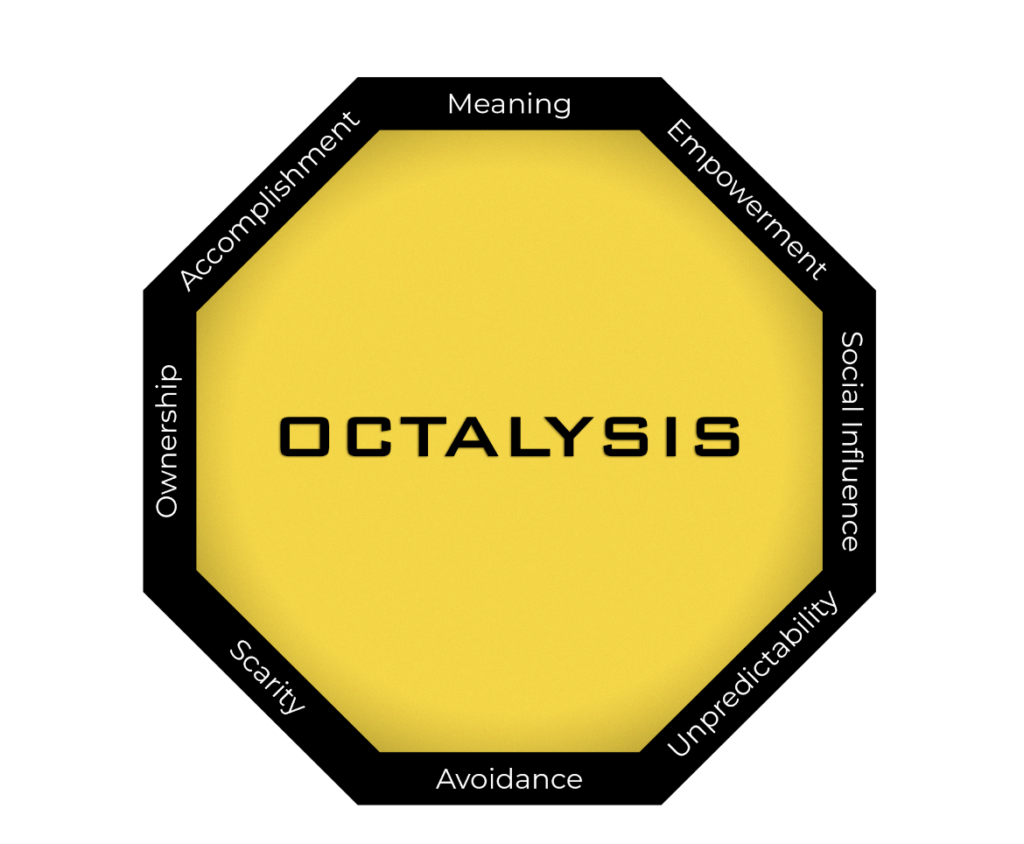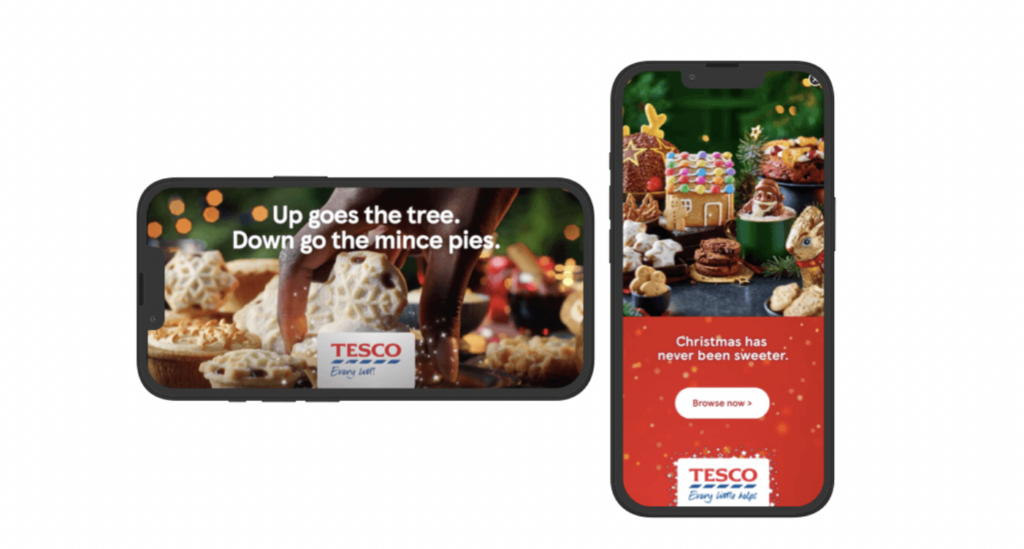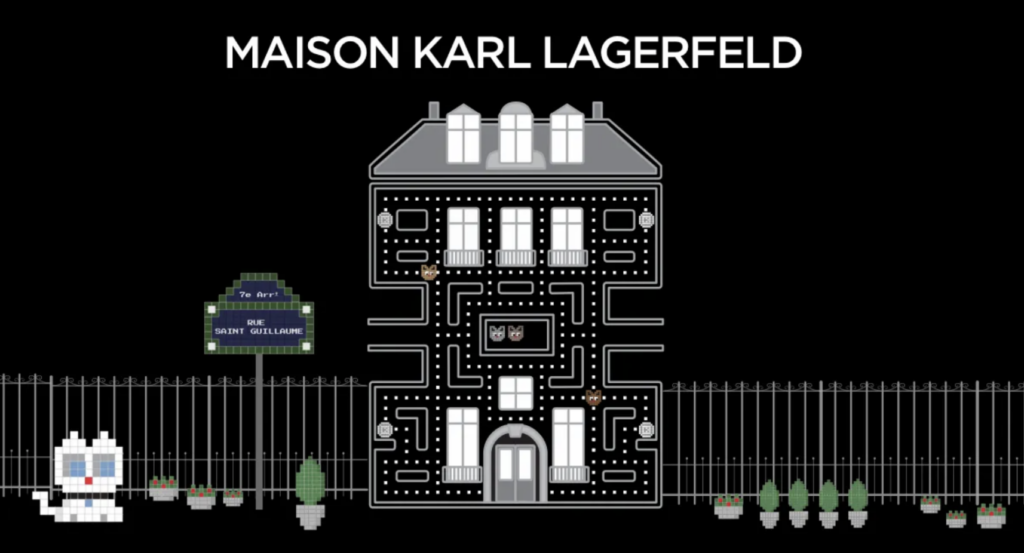Gamification is a powerful concept that turns ordinary activities into engaging and enjoyable experiences by borrowing elements from games.
It’s all about adding fun and motivation to tasks that might otherwise seem ordinary. By integrating game-like features such as points, rewards, and competition into non-game settings like work, learning, or customer interactions, gamification creates enthusiasm and participation. In this article, gamification and its relationship with Octalysis analysis will be examined and these real life practices will be tried to be obtained through certain case studies.
What is the Octalysis Framework?
The Octalysis Framework, developed by Yu-kai Chou, is a gamification concept that utilizes eight fundamental motivations, known as Core Drives, to shape behavior and encourage engagement in various activities. These Core Drives are:

- Epic Meaning & Calling: This drive inspires individuals to believe they are part of something greater than themselves, motivating actions that contribute to a larger purpose or cause. It drives selfless acts and the belief in “beginner’s luck.”
- Development & Accomplishment: People are driven by the desire to make progress, develop skills, and achieve mastery. Challenges and achievements provide meaning and motivation.
- Empowerment of Creativity & Feedback: This drive is about giving people the freedom to express themselves and come up with new ideas. It can be accomplished by giving users access to resources and tools like building materials, paint, or musical instruments. Open-ended challenges that let users come up with their solutions can also be used to accomplish this.
- Ownership & Possession: The sense of ownership motivates individuals to increase and improve what they possess, whether it’s virtual goods, currencies, or personal profiles. This principle also pertains to the possession of processes and projects.
- Social Influence & Relatedness: Social elements, including mentorship, acceptance, and competition, drive individuals to relate to others and seek what their peers have. Here, relatability and nostalgia both matter a lot.
- Scarcity & Impatience: The desire for rare, exclusive, or immediately unattainable items or experiences fuels this drive. Scarcity and time-based rewards make people engaged.
- Unpredictability & Curiosity: This drive keeps individuals engaged because they don’t know what will happen next. Unpredictable outcomes form the foundation of gambling, suspenseful media, and their irresistible appeal.
- Loss & Avoidance: People are motivated to act because they are afraid of losing something or suffering unpleasant outcomes. It’s a powerful motivator for avoiding negative outcomes.
The Octalysis Framework is a tool that can help businesses, game designers, and educators use core drives to create engaging experiences. Gamification is valuable because it taps into innate motivations, such as competition, aspiration, and self-expression. Understanding consumer motivations is the key to developing appealing products and experiences. This can help businesses forge connections with consumers that are genuinely engaging and exciting. It goes without saying that the octalysis framework should align with the purpose of a company’s campaign in order to have expected outcomes. Therefore, teaming up with professionals who know which core drives to utilize in order to achieve results can boost the overall success of a campaign, which can be seen in the case studies below.
How is the Octalysis Framework Used for Marketing?
Prada Candy: The Case of Hidden Treasures
L’Oréal wanted more people, especially those aged 18-34, to know and like their Prada Candy fragrance. For this purpose, they collaborated with “Activision Blizzard” on the “Candy Crush” game. They made a special mini-game inside Candy Crush where players had to find Prada Candy hidden in chests while matching Candy Crush candies. And when players finished the mini-game, they got a free sample of Prada Candy and learned more about it. It was a win-win, more people got to enjoy the fragrance, and Candy Crush players had a blast playing and discovering Prada Candy.

The results of this campaign were a big success:
- 40,000 fragrance samples were requested within 24 hours.
- Fragrance redemption site traffic is up by nearly 1,800%.
- Ad Recall and Awareness had double-digit growth.
- Favorability increased by +3.5%.
- Click-through Rate up by 6.6%.
- The Engagement Rate increased by 98.9%.
- Completion Rate increased by 96.2%.
The “core drives” from the Octalysis Framework used here are;
- Development & Accomplishment: Potential Users collect the Prada candies by matching the “candies”. As the game progresses, users do this action more and try to pass the levels to find more candies and money, which explains this core drive.
- Ownership & Possession: Normally, this drive motivates users by making them feel like they have won something in the game, but here, receiving a real gift when they complete the game also provides this ownership motivation.
- Unpredictability & Curiosity: This was a drive coming from the Candy Crush mechanics, rather than the campaign. Because we do not know which candies come in the game and the combos are formed randomly.
TESCO: Interactive elements are the key
Tesco teamed up with Activision Blizzard Media to make their food products more appealing and boost the desire to buy them. They did this in a holiday campaign during November and December 2021, targeting gamers in the United Kingdom. Tesco used short 10-second videos and interactive end cards to show off their tasty food products within the games. They cleverly added captions instead of sound, so players wouldn’t need to turn on the volume. They also encouraged players to visit the Tesco website with a clear call to action.

The holiday campaign by Tesco was a resounding success:
- 99% increase in Viewability.
- 98% increase in Video Completion Rate.
- 14% increase in Ad Recall.
- 4% increase in Quality Perception.
- 4% increase in Purchase Intent.
The “core drives” from the Octalysis Framework used here are;
Epic Meaning & Calling: This campaign targets the date of Christmas, and Christmas is an epic period for people for a long period that includes good times, being together, and sharing with family and friends.
Empowerment of Creativity & Feedback: With the choice-based ads tool, users making different inputs getting different results, and making free choices in this area triggered this core drive.
Maison Karl Lagerfeld
Karl Lagerfeld and Smack teamed up for a creative marketing campaign centered on gamification. The Pixel Collection which featured pixelated artworks of Lagerfeld and Choupette in shades of red, yellow, and blue, was aimed to introduce through a distinct combination of gaming and fashion elements. They developed Karl Lagerfeld’s first-ever game, a Pac-Man-inspired HTML5 web game featuring Choupette, Karl Lagerfeld’s beloved cat. Players collected bonus items and Karl Coins to power up Choupette, making her faster while avoiding the dogs. Players who entered their details were eligible for a prize draw, and they could challenge friends by sharing their scores. QR codes were placed in stores and on product tags for easy game access. Users could also play via social channels, in stores, or on the brand’s website.

Players aiming for high scores while collecting cool items like sunglasses, a camera, a bag, Lagerfeld’s lucky number seven, and the Eiffel Tower. Plus, a lucky player won a €250 Karl Lagerfeld shopping experience each week.
Here are the campaign’s key achievements:
- Over 21,000 visits to the online store in the first week.
- A whopping 18,000 new email sign-ups.
- The company also gained media and social coverage including Harpers Bazaar, Yahoo, It’s Nice That, and Creative Review through PR efforts. It was observed that these studies increased brand awareness. It was observed that this campaign also greatly increased brand awareness.
The “core drives” from the Octalysis Framework used here are;
Development & Accomplishment: Since the game was developed on Pacman, one of the classics of game history, many game mechanics are already close to perfect. The aim of the game is to collect as many points as the players can, because of that, they compete with the other players to achieve high ranks in the leaderboard. Each week’s leaderboard winner receives a Karl Lagerfeld shopping experience that’s worth €250.
Ownership & Possession: In addition to the points in the game, Lagerfeld’s lucky number seven, sunglasses, a camera, a bag, and the Eiffel Tower. Players collect them and add them to their collection, so the motivation to collect rare limited items directs them to this core drive.
Wendyverse: Metaverse Pioneer
Wendy’s launched a creative gamification campaign called the “Wendyverse” in collaboration with Horizon Worlds. The aim of the campaign is to establish a unique presence in the metaverse while engaging users in fun and interactive ways.

In the Wendyverse, four distinct virtual worlds were created. Wendy’s planned to offer a variety of experiences including virtual and in-person activities. Some of the activities available would include basketball and other fun activities.
As a result of the campaign; Wendy’s established itself as a metaverse pioneer. Users could interact with the brand and each other in immersive ways. The campaign allowed the users to earn Wendy’s Rewards in real life so the company also boosted their digital business. Wendy’s was able to bridge the real and virtual worlds while also providing its consumers with new experiences thanks to this campaign.
The campaign was a huge success for Wendy’s:
- It reached a whopping 52 million people, significantly boosting Wendy’s brand and message awareness.
- The highest number of daily active users among all Horizon Worlds.
- Over 10,000 fans visited within the first week.
- 16% of users returned for more within the first week.
- An impressive 15% of “Wendyverse” residents who were entirely new to Horizon Worlds, showing Wendy’s ability to attract new users to the metaverse.
The “core drives” from the Octalysis Framework used here are;
Development & Accomplishment: The points and rankings in the games are important for the customers in this virtual reality, because being able to use the points and rewards they earn here in real life triggers this core drive to a high extent.
Social Influence & Relatedness: The players go to the shops or meet their friends and do the collective activities as usual in the virtual reality provided by Wendyverse, just like in real life, which literally summarizes this core drive.
Conclusion
In conclusion, the Octalysis Framework and gamification strategies are effective tools for businesses and brands that want to engage and motivate their customers. These case studies achieved great success with using these tools. Whether it’s introducing fragrances in a mobile game, making food products more appealing through interactive ads, gamifying fashion with a Pac-Man twist, or immersing users in a metaverse of fun and rewards, the results speak for themselves. Gamification can help businesses create stronger bonds with their customers and create long-term loyalty.










